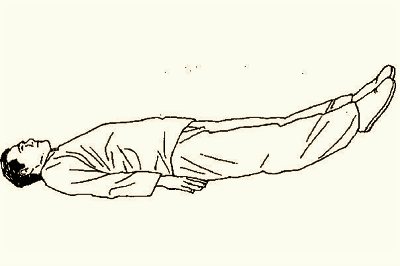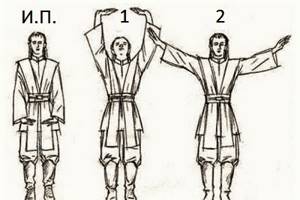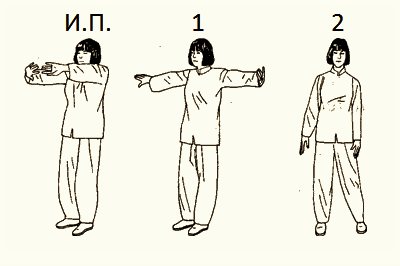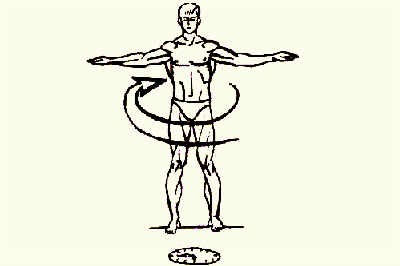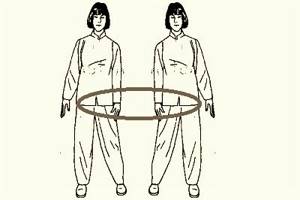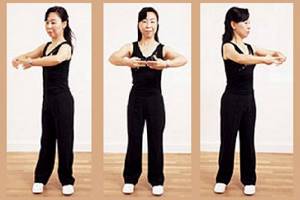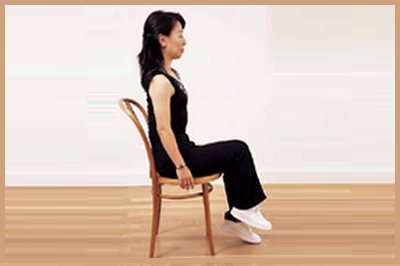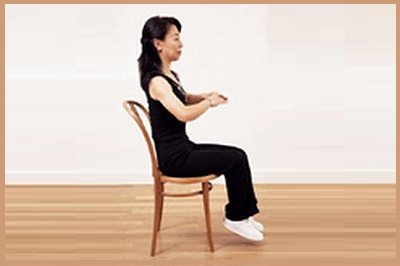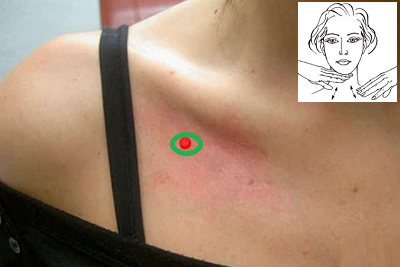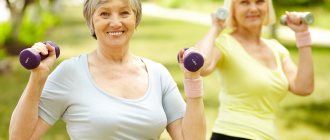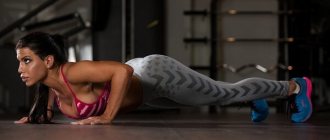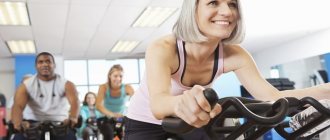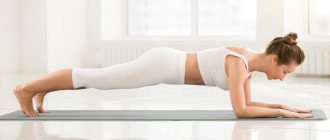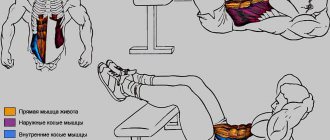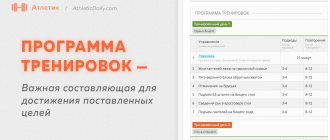Strength exercises can be done by a person at any age. Look at Ernestine Shepard. For this female bodybuilder, age was no obstacle. She continues to engage in bodybuilding not just at 65 years old, but at 80! Of course, in order to master such physical exercises, you need to engage in heavy sports for many years. But Ernestina is an indicator that, despite the years, you can look good and work out. Let's see what exercises there are for beginner athletes - for women over 60 years old.
Exercising for the Elderly – Physical and Psychological Benefits
As you age, exercise is more important to your overall health than when you are younger.
According to the latest research by Swedish scientists, exercise in older people helps increase life expectancy, regardless of whether the person has previously been involved in sports. Physical activity not only prolongs, but also adds years to life. Thanks to exercise, an older person will look much younger, gain energy and become more prosperous. The positive effects that exercise has on physical health :
- Exercise helps older adults maintain or reduce their weight. As the body's metabolic processes slow down with age, maintaining a normal weight becomes difficult. Exercising for older people helps speed up metabolism and increase lean body mass, which leads to burning extra calories. When an optimal healthy body weight is achieved, the overall health of the body improves.
- Exercise for older adults helps reduce the impact of chronic diseases. When people over 50 years of age perform exercises, the immune system becomes stronger, the cardiovascular system and bone tissue are strengthened, and the digestive system improves.
Also, those people who play sports reduce the risk of developing chronic diseases, including Alzheimer's disease, diabetes, obesity, heart pathologies, osteoporosis and some types of oncology.
- As a result of training, older people increase mobility and flexibility of the body, and improve coordination of movements. Regular exercise helps improve your posture, which in turn can reduce your risk of falling. Strength training reduces the symptoms of chronic diseases such as arthritis.
The positive impact that exercise has on the psychological health of older people:
- Thanks to regular physical activity, a person's sleep improves, and, as is known, poor sleep contributes to rapid aging. When playing sports, it becomes strong and deep, which has a positive effect on the overall health of the body.
- Training older people helps improve their emotional state and self-confidence. During exercise, the hormone endorphin is produced, which in turn reduces the likelihood of depression, anxiety and sadness. An active lifestyle allows older people to feel calmer.
- Benefits for brain activity. Exercising for older adults, like playing Sudoku or doing a crossword puzzle, keeps the brain active. Exercise helps older adults' brains multitask and develop creativity, which helps prevent memory loss, cognitive decline, and dementia.
Regular physical activity also slows down the progression of brain disorders such as Alzheimer's disease.
Training for older people is absolutely contraindicated if:
- suspected acute coronary syndrome;
- acute heart failure;
- uncontrolled hypertension;
- 3rd degree heart block;
- uncontrolled diabetes mellitus.
To some extent, there are contraindications for:
- cardiomyopathy;
- heart valve defects;
- ventricular ectopy complex.
Many older adults with relative contraindications can perform low-impact exercise.
In some cases, intense training with rest between sets may be more beneficial than a long set of tasks with moderate load. Recommended articles to read:
- Social services for older people
- Diseases of old age
- Valuable tips on how to choose a boarding house
The training program can be changed individually for patients with various ailments (for example, arthrosis of the main joints - knees, ankles, hips).
It should be noted that if an elderly person experiences chest pain, dizziness and palpitations during exercise, they should stop exercising and seek help from a medical professional.
Read material on the topic: Yoga for older people - harmony of body and spirit
Fitness Center Comparison Chart
| Name | Cost of 1 training session, rub. | Trial visit, rub. | Discounts, promotions |
| SE Sports | 300 | 500 |
|
| ATHLETIC | No | for free |
|
| Fly Fitness | 500 |
| |
| Vavilov Club | 1500-2500 | Guest visit – 500-2500 rubles. with unlimited number of zones |
|
| M&G | 1300-1800 | Guest visit – from 500 rub. |
These promotions do not apply to pension memberships. |
| FitFlex | 1000 | 400 | No |
Safe training for older people: instructions
The most beneficial thing for health is an addiction to an active lifestyle. But before you start, you need to think through and create a training plan for older people.
- Before starting classes, you should consult a specialist, especially if there are contraindications. You also need to clarify what types of active loads need to be excluded.
- Before training, older people should take into account the characteristics of their health and assess how physical activity will affect it. For example, patients with diabetes need to choose an exercise schedule that will be combined with the injection schedule and meals. You also need to monitor your sensations: if you feel acute pain or shortness of breath, you need to stop doing the exercises. You can try reducing your load or choosing other types of activity.
- Older people should start training at a minimum. If a person has not received physical activity for a long time, intense exercise can be harmful to health. The intensity of training should be increased gradually. It is recommended to use a training plan for older adults that consists of two ten-minute periods twice a day. You can also attend strength classes once a week. Before exercise, you need to warm up. This will help prevent injury and discomfort during exercise. We must not forget about water balance.
- It is necessary to follow a training schedule, performing exercises at least 3-4 times a week. This way, classes will gradually become a habitual pastime.
- You should remember about motivation and focus your attention on small goals, for example, improving your mood or increasing your vitality. Since large-scale tasks, for example, weight loss, require significant time investment.
- During training, older people need to pay attention to the feeling of discomfort. Active exercise should not be a burden or cause injury. If, while performing physical activity, an elderly person experiences dizziness, chest pain, breathing becomes intermittent, and blood pressure increases, then the exercise should be stopped and consult a specialist for advice. You should also stop training if your joints are swollen and painful to touch. It is imperative to listen to your body. If an elderly person experiences discomfort and pain during physical activity for some time, they need to exercise less, but more often throughout the day.
- Conduct experiments with “full awareness.” During training, older people are advised to concentrate their attention on the body. Focusing your thoughts on your own body, for example, on the rhythm of your breathing, the touch of your feet on the surface, allows you to quickly improve your physical fitness and get rid of stress.
Read material on the topic: Prevention of atherosclerosis: advice and recommendations from experts
Where is it better to study - at home or in the gym?
To get any visible results, it is extremely important to exercise regularly. The “occasionally” and “to suit the mood” options are simply a waste of time. However, it is not always possible to find time and money to visit the fitness room. The solution to the problem is very simple - you can do the exercises at home, and save a lot of money. And you don’t need to follow a schedule, since you can choose the time for classes yourself.
If you decide to work out in the gym
Your attitude and what you see around you play an important role. The atmosphere of any fitness room itself encourages the idea that here you should not lazily indulge in dreams of beautiful forms, but work hard to make these dreams come true.
When you are in a specialized gym, you can be absolutely sure that no one will endlessly tug at you or distract you from doing the exercises. By concentrating on training and correct movements, it is easier to achieve better results. But at home there may be problems with this.
When you work out in the gym, you can look at other women who are training nearby. This is a good incentive to keep up and achieve better results. In addition, the coach will not refuse advice and will be able to correct you if you do something wrong.
It is very important not to do exercises “for show”, but to perform them as expected. Then you can count on high training efficiency.
If you decide to study at home
Fitness classes at home save a lot of time: you don’t have to go or drive anywhere, and there’s no need to stand in line for the exercise machine. You can choose music for the background and videos that will set you in the right mood according to your taste, and not be content with what the trainer turned on in the gym.
If you are very shy or do not like to be told how and what to do, of course, it is better to practice at home. You won’t have to experience other people’s judgmental glances and listen to unnecessary advice from fellow trainees. In addition, you can dress as you please, without taking into account the opinions of others. Exclusively for your own pleasure. And after finishing your workout at home, you can always eat normally to replenish energy costs.
It would seem that home exercises are much better than in the gym. However, there are pitfalls here too. The main disadvantage is that the house is full of various distractions. There will be no coach nearby to point out mistakes so that you get a better result.
In addition, the atmosphere of the house itself is very chilling. If you do not have iron willpower and the ability to self-discipline, it is better to immediately go to the gym.
Workout plan for seniors in the gym
Older people think less about increasing their strength and gaining weight. This does not imply the obligatory performance of special exercises and active work with free weights. Several movements for the muscles of the back, legs, abs, arms, chest and shoulder girdle will be useful for an elderly person. You need to work in two to three sets, each with two to eight repetitions.
- Vertical and horizontal block pulls.
- Smith machine bench press.
- Bench press on an incline bench.
- Standing dumbbell raises.
- Reduction of dumbbells in a lying position.
- Row of a barbell located behind the back.
- Second day of training:
- Calf raises.
- Leg press.
- Leg extension on the simulator.
- Leg bending while lying down on a machine.
Read material on the topic: Health of older people
Fitness for the elderly - recommended sports
In old age, outdoor activities are most effective. The main types of training that, according to doctors, are suitable for almost all older women:
- Nordic walking.
- Bicycle rides.
- Swimming.
- Yoga.
- Pilates.
- Breathing exercises.
- Various types of exercises for joints and spine.
- Skiing.
At the beginning of training, the pace should be low, you should focus on the sensations of the body. Gradually, muscles and joints will become stronger, lung capacity will increase, and the intensity of exercise can be increased.
Power training
Exercises must be started smoothly, slowly increasing the load. At the initial stage of training, it is best to use a set of simple exercises, which include raising your arms with dumbbells, swinging your arms with dumbbells, as well as bending and extending your legs with weights.
The basic rule of strength training is its regularity and the correctness of the selected exercises, and their intensity. That is why it is worth seeking advice from professional fitness trainers.

Exercises for weight loss
Older, overweight people have a hard time engaging in exercise that burns calories. The good thing about the complex proposed below is that it is made up of extremely simple movements borrowed from Eastern healing practices.
Despite the fact that they do not require large energy expenditures, if you perform them twice daily, you will get rid of extra pounds and receive additional healing effects.
Complex for performing in the morning (exercise) and in the evening (cool down)
| Title and image | Brief instructions |
| After waking up, lying in bed, make a couple of movements in the ankle joints, and then pull up, in turn, the right, left and both knees at the same time. Then raise your heels 50 cm, and with your toes extended, draw large circles clockwise and counterclockwise for 30 seconds. Keep your feet together. To begin with, you can bend your knees slightly and take short breaks to rest. |
| Get up, drink a glass of water, go to the toilet, change clothes for exercise, turn on some music. Starting position: legs slightly apart, arms along the body, palms facing the floor, middle fingers touching each other. 1. Inhaling, raise your arms forward and then up. Stretch your spine, freeze and do not breathe for 6 seconds. 2. As you exhale, gently lower your arms down to your sides. Repeat 10-20 times. |
| Starting position: legs together or apart, arms extended forward, palms facing away, middle fingers touching each other. 1. While inhaling, spread your arms to the sides, but do not make movements in the wrist joints. Hold your breath and freeze in this position for 6 seconds. 2. Turning your hands up with your fingers, exhaling smoothly, slowly lower your hands down, and then into I.P. Repeat 10-20 times. |
| With your arms at your sides, spin clockwise in one place. Then stop and take a few breaths. Start with 3 turns. Every week add 2 rotations. When the number of spins reaches 21, you can stop increasing them, or you can spin as much as you want. |
| Starting position: feet shoulder-width apart, arms along the body, palms can be pressed to the sides of the hips. Breathing smoothly and shallowly in a natural rhythm, make 30 circular rotations of the pelvis in one direction and then in the other direction. After that, close your eyes and stand quietly for a few seconds. If desired, the exercise can be repeated 2-3 times, or replaced with a hula hoop rotation. |
| Stand on one leg for as long as you can. The position of the raised leg and arms can be arbitrary. The total balance time is 3 minutes. Ideally, this is how long you should stand still, but if you can’t do it, don’t despair. Over time, the exercise will become accessible. Remember to perform a balance hold while standing on the other leg. |
You can learn how to do qigong “Moon Pulling”, “Water Dilution” and “Circular Qi Flow” correctly from this short video.
Let's continue the complex with exercises from the Japanese rehabilitation therapist, the author of the Petankoo gymnastics, Mrs. Chiaki Fukuda, and walking on the buttocks, invented by the domestic doctor Neumyvakin.
| Image and title | Brief instructions |
| Starting position: feet shoulder-width apart, hands in second ballet position. Inhale. As you exhale, slowly turn to the left and hold for 5 seconds. The movement occurs due to twisting of the lower back. Legs and buttocks remain motionless. The arms, shoulders and head too, but they rotate as the waist twists. As you inhale, return to the starting position and twist in the other direction. Number of repetitions: 20 (10+10). |
| Sitting on a chair, place your feet on your toes, keep your back straight, and use your hands to hold on to the edges of the seat. Inhale and tighten your abdominal muscles. As you exhale, lift one knee up a little, without relaxing the muscles. Freeze for 30 seconds. During this time, breathe shallowly. Repeat the exercise, lifting the other leg. Number of repetitions: 10 (5+5). |
| It is quite a complex exercise, but regular training will bring the desired result, pleasure and ease of execution. Starting position: back straight, feet on half toes, hands as in the photo. Inhale, tighten your abdominal muscles. Raise your toes off the floor. Hold the position for 30 seconds. Breathe shallowly and evenly. Number of repetitions: 10 |
| This exercise is very beneficial, especially for older women, but it is also good for the male prostate gland. Walk on your buttocks for one music track, about 3-4 minutes, moving forward, backward, left and right. Remember to keep your back straight and not bend your knees. |
| At the end of the complex, sit cross-legged and do a one-minute massage of the Ku-fan point, located under the right collarbone. Massage it with circular pressing movements, clockwise and counterclockwise, with 2-4 fingers of your left hand. Then, for one minute, lightly pat the area of the double chin with the back of your fingers. |
We tighten the stomach and sides without physical activity
And in conclusion, let's recall an old Indian idea that you can practice throughout the day. Everything is brilliantly simple!
Take a strong thread. As you inhale, stick your stomach out, and as you exhale, pull it in. In the half-exhalation position, when the stomach is half retracted, tie a thread tightly around your waist (just above the navel). This is best done over clothing. All!
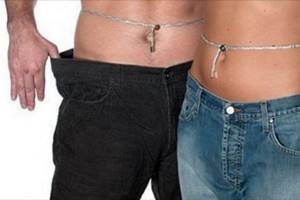
A regular thread will help remove the belly and sides
The weight loss effect is achieved due to the fact that the thread forces the muscles of the abdomen and back to be toned all the time, and when taking a deep breath, they also tense further. True, the latter applies more to men, who by nature have a diaphragmatic type of breathing.
However, for women, this simple trick will help get rid of the belly and folds at the waist, but it will take a little more time. And the last recommendation. It is better to remove the thread during physical education or housework that requires active movements.
Eat and stay healthy, exercise, be healthy and live 120 years!
Irina Sokolovskaya, 64 years old
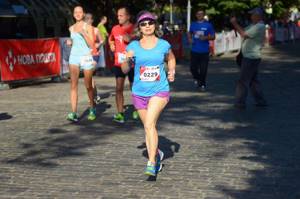
I’m already well over sixty, but I’m a very young runner - I started running a little over five years ago. I am an electronics engineer by training, then I worked in securities and investment management, and now I am a member of the supervisory board of one of the Kyiv companies.
Running never attracted me; I hated cross-country in physical education classes at school. I have been far from sports all my life, like probably most ordinary people busy with work and family.
True, I always loved to walk a lot, and we spent our holidays with the whole family on mountain hikes.
A few years ago, our absolutely unsportsmanlike daughter, Yulia, unexpectedly became interested in running. And she was able to infect me, her younger brother, and her children with this passion. My husband remained on the side of the fans; he actively supports us at competitions and in all adventures related to running.
I started running according to a program for beginners, which alternates walking and running segments. So, after several months of training, I ran my first five kilometers. I was happy. It was hard for me to believe that I could do this.
The main thing here was to be persistent and not give up on training. The support of loved ones and a sense of responsibility helped - after all, I am the grandmother of five grandchildren, it would be a shame to give in to difficulties in front of them.
I got a beautiful sports uniform, a sports watch, I mastered the Garmin program and was able to analyze my runs on the computer.
And then my daughter gave me registration for a five-kilometer race in Kyiv. I was shocked. I didn’t even think about any competitions. But I decided to try and took part in my first race.
Surprisingly, I liked it. I was even interviewed by television correspondents - I must have looked very happy after the finish. I ran these five kilometers in 32 minutes, and now I can hardly run out of 30 minutes, so there is no talk of any sporting achievements. But that doesn't make any difference to me.
Over the years, I have mastered the 10-kilometer distance, the half-marathon, I don’t even think about the marathon - I’m not ready either mentally or physically. But I learned to listen to my body, endure, and gained experience in recovering from injuries.
Fitting running training into my fairly busy schedule requires some creativity. Most often I run early in the morning before work (in winter this happens in the dark), and I run long runs on weekends. I try to train four times a week, sometimes it’s strength training or special running exercises.
I train on my own, I'm too slow to train in a team. Sometimes I run with my daughter. I try to read more about running and training. I’m glad that there are loved ones nearby who are ready to support and teach.
I live in Kyiv on Podol and I have a wonderful selection of running routes - the Dnieper embankment, Trukhanov Island, Vladimirskaya Gorka, Landscape Alley, Vozdvizhenka, Mariinsky Park, Glory Park, Dnieper steeps. On weekends I like to go for a long run to the Goloseevsky Forest, to the Expo Center (VDNH).
We try to go with the whole family to races in different cities of Ukraine. In our geography, besides Kyiv, Ivano-Frankivsk, Chernivtsi, Cherkassy, Poltava, Chernigov. Grandchildren take part in children's races.
One of the biggest passions in my life is traveling. I try to combine this with running; sportswear always comes with me on a trip. And sometimes a trip abroad is planned to take part in a competition - so in 2021, my husband gave me a registration for the Paris Half Marathon. This was one of the most memorable events in my running biography. We ran another extraordinary half marathon with my daughter in Kenya in the Masai Mara.
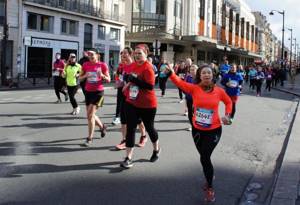
At the half marathon in Paris
Running means a lot to me. This is an opportunity to escape from the hustle and bustle, to be alone with yourself, with nature, to feel that there is a dawn in this world, fog over the river, rain on your face, the smell of autumn leaves. Running gives me energy and helps me discover something new in myself.
